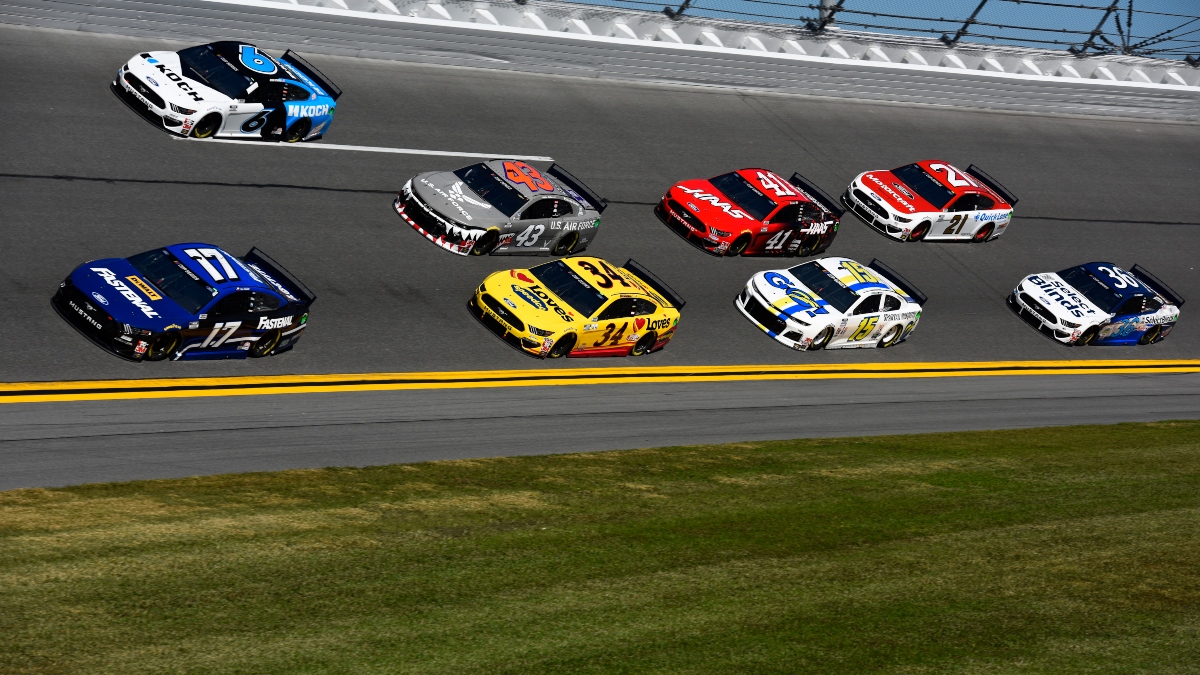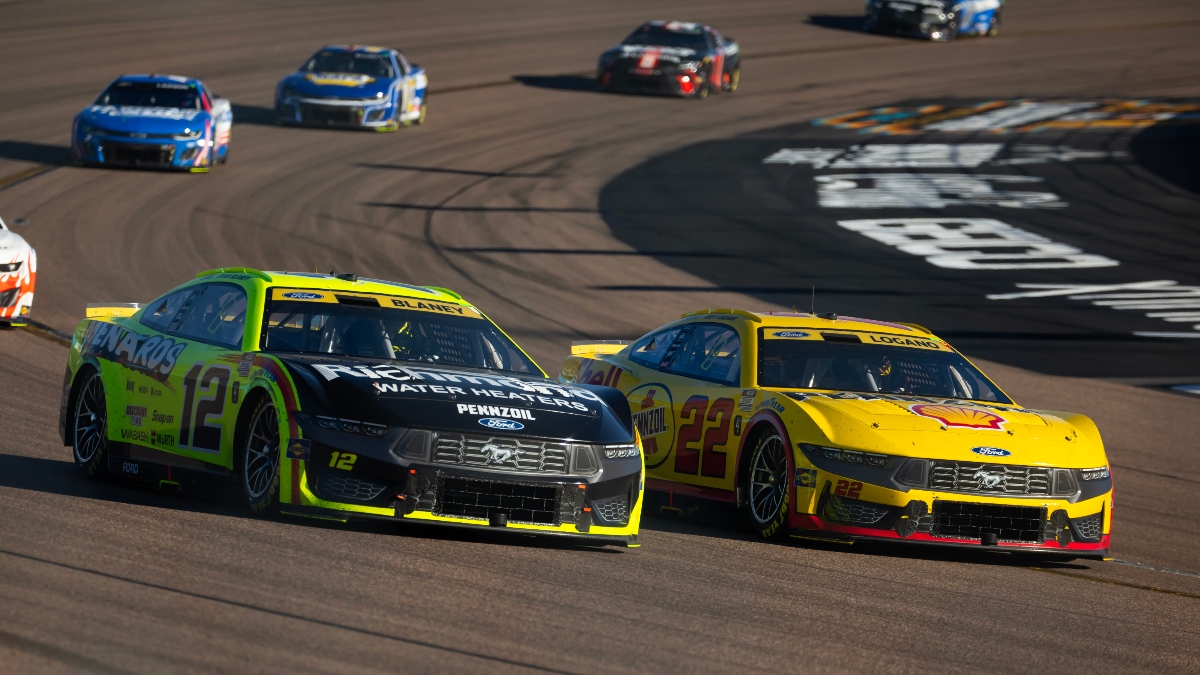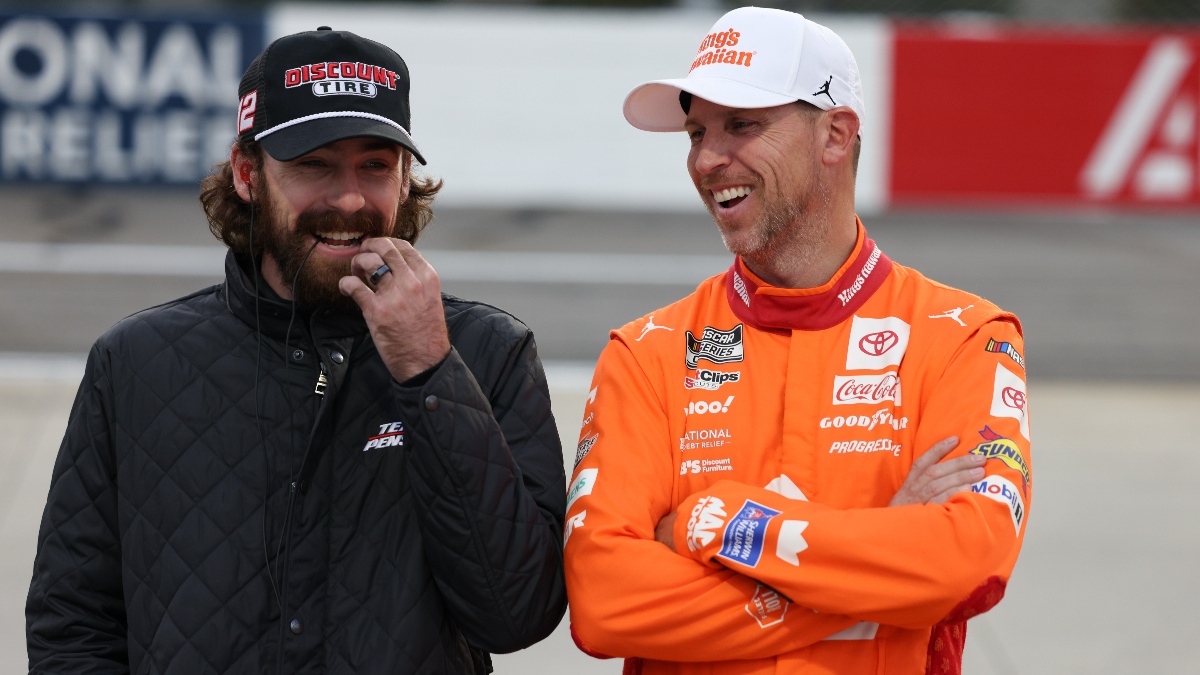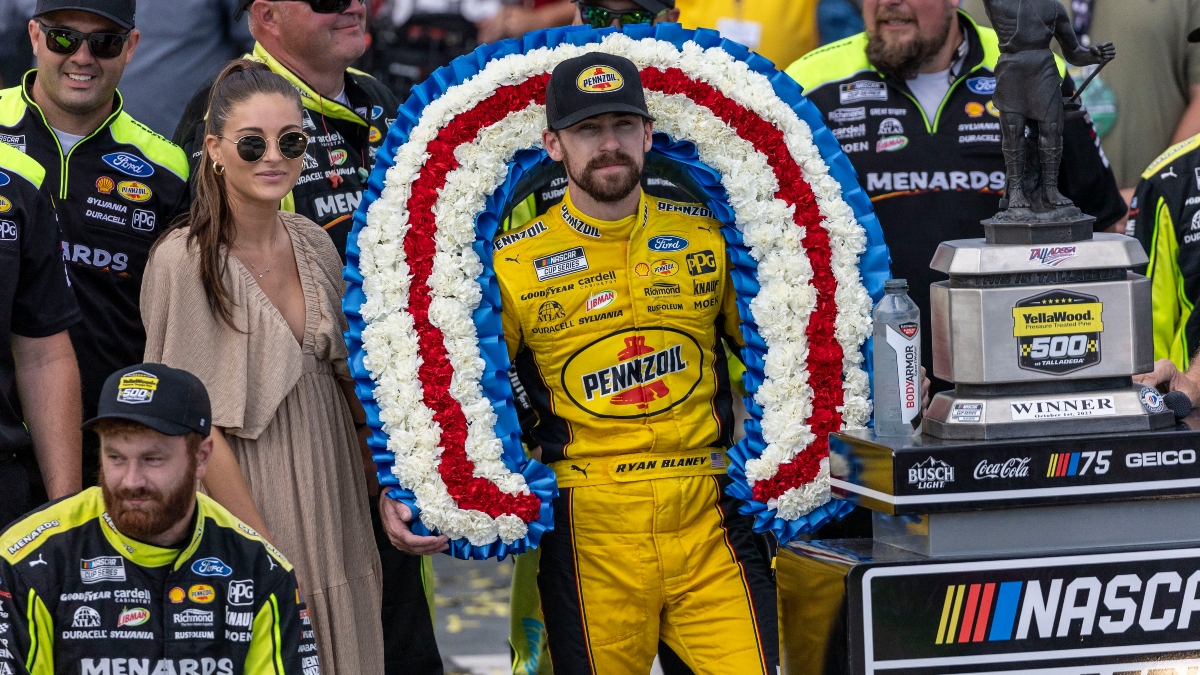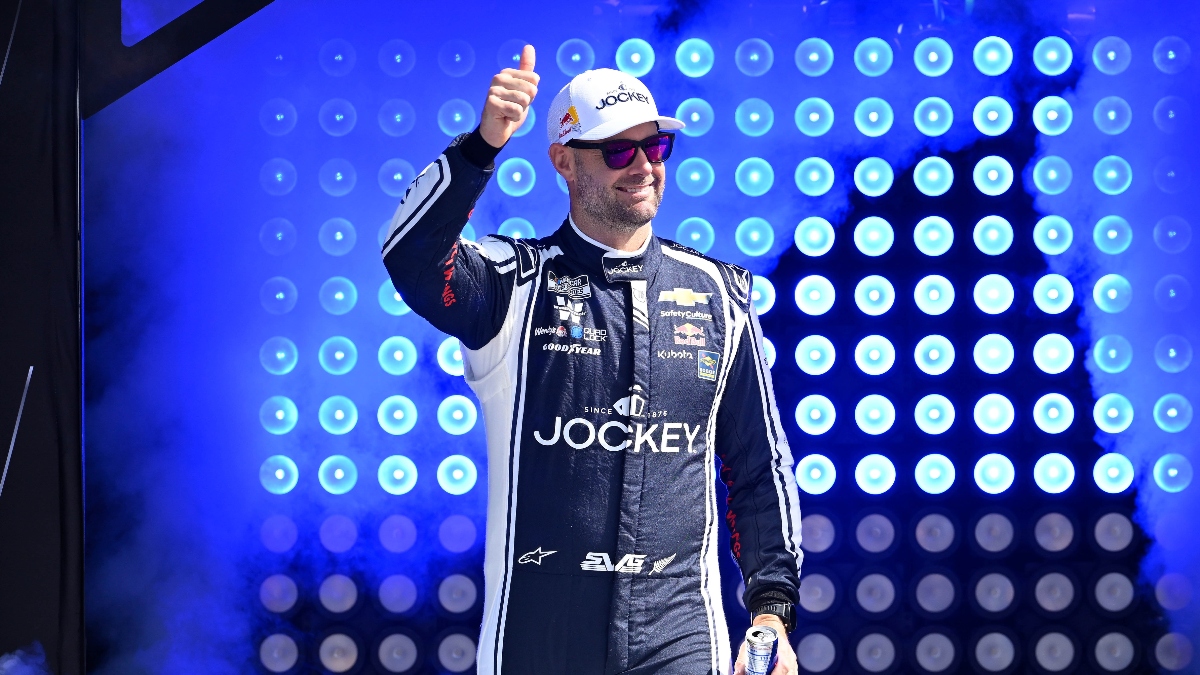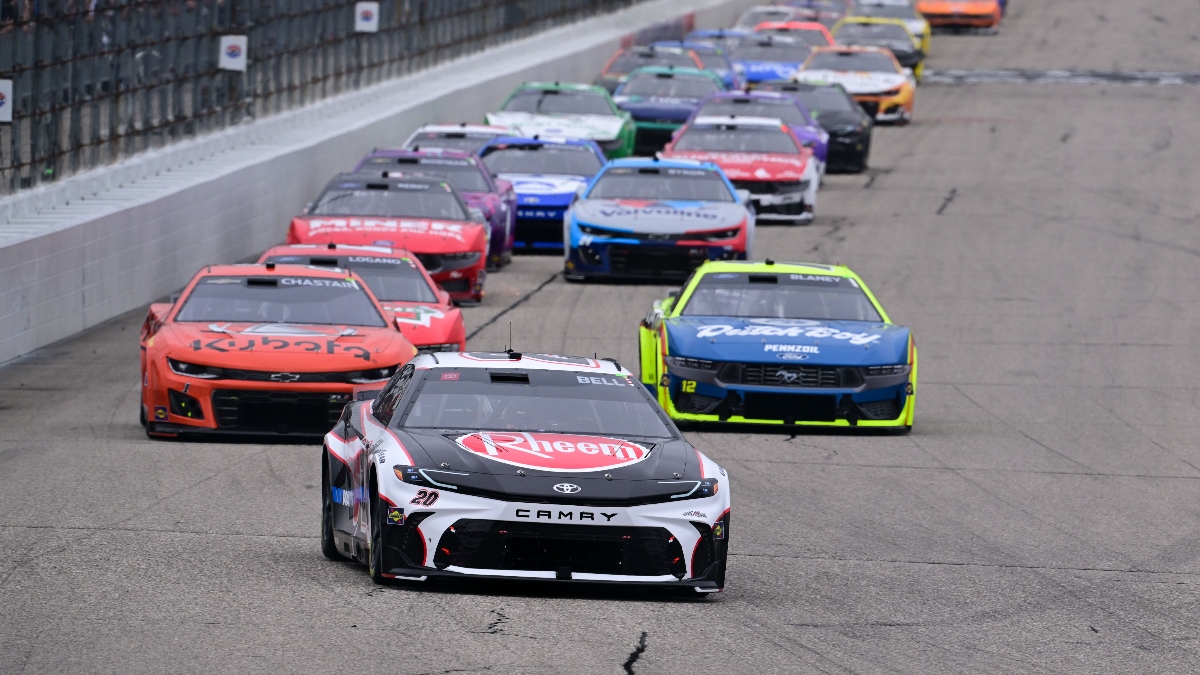- If betting longshots isn't your preference, we've got an optimal DFS strategy for Sunday's Daytona 500.
If betting longshots to win isn't quite your thing, another fun way to get in on the Daytona 500 action is to play Daily Fantasy NASCAR over at DraftKings or FanDuel.
To play, you create a lineup of either five or six drivers while staying under a specified salary cap. You'll earn points for how well your drivers finish, but also for things like laps led, fastest laps, and place differential.
This place differential category is key at superspeedway races. Place differential is easy to calculate: on DraftKings, simply take a driver's starting position, and subtract the driver's finishing position. So if a driver starts 30th and finishes 10th, that's 30 – 10 = 20 points for place differential. Conversely, if the driver were to fall from 15th to 33rd, that would be 15 – 33 = -18 points. On FanDuel, take these numbers and divide by two. So the first example would net a driver 10 points, and the second example would be -9 points.
Get 500-1 odds on any driver to win the Daytona 500 at BetMGM
You can see how this impacts fantasy scoring. Drivers that start in the back and finish far forward are incredibly valuable. They pick up a large amount of points for finishing position, as well as for place differential. And because of the nature of superspeedway racing, this has tremendous impact at Daytona. Because of the equalizing force of the draft, it's not hard for even back-marker cars to finish inside the top ten or 15. Thus, most of our lineup should consist of these drivers.
Let's dive into strategy of how to pick a good lineup, and then I'll touch on some individual drivers. For simplicity sake, I'll refer to DraftKings scoring in this article, but the strategy doesn't change too significantly for FanDuel.
Top-Six DraftKings Daytona 500 Points Per Year by Starting Position
Let’s look at a table of the top six DraftKings scoring drivers per race at the Daytona 500, listed in order by their starting position.
We can put some numbers to this pretty easily.
Number of drivers starting in the top 5
- Minimum: 0
- Maximum: 2
- Average: 0.4
Number of drivers starting in the top 10
- Minimum: 0
- Maximum: 2
- Average: 0.73
Number of drivers starting in the top 20
- Minimum: 0
- Maximum: 4
- Average: 1.33
Number of drivers starting 30th or worse
- Minimum: 2
- Maximum: 5
- Average: 3.67
Number of drivers starting 21-29
- Minimum: 0
- Maximum: 2
- Average: 0.93
We can put all these stats into context with a few basic rules of thumb.
Rule 1: Rarely use drivers starting inside the top five and avoid the front row starers almost completely.
Only six drivers starting inside the top five have finished in the top six of DraftKings scoring since 2005. That means, less than half of your lineups should contain a driver starting inside the top five.
And only once has a driver starting on the front row (first or second) ended up in the optimal DraftKings lineup. That was Greg Biffle in 2002 who started second, finished third, and wound up with the sixth-most DraftKings points that year.
Rule 2: Use no more than two drivers starting inside the top 10. Preferably one or zero.
There's never been a race where three drivers starting inside the top 10 ended up in the optimal DraftKings lineup. The closest we’ve come was 3rd, 5th, and 11th all in the optimal lineup in 2015.
Additionally, only twice in the last 15 Daytona 500s has exactly two drivers starting 10th or better ended up in the optimal lineup. If you play multiple lineups, I'd recommend about one in eight lineups use two drivers starting 10th or better.
Rule 3: You still need to tailor your strategy to the individual drivers.
Ordinarily, I'd have a rule here that says don't use too many drivers starting in the 16-25 range. In fact, only seven drivers in fifteen years have ended up in the optimal lineup from this range.
However, 2020 has thrown us a bit of a curveball. Because the Duel qualifying races were pretty tame, a few big name drivers ended up in the 15-28 range instead of starting back in the 30s with more mediocre drivers ending up in the late teens to mid 20s. So we may have to start drivers from here a bit more than normal.
Martin Truex Jr., Matt DiBenedetto, Kurt Busch, Denny Hamlin, Chase Elliott, Ryan Blaney, and Kyle Busch make up half of the 15-28 starting range. All of them are either past winners, near winners, or past dominators of this race.
I'd recommend not pulling more than 2 or 3 from this range in any single lineup, but these are the drivers that start the farthest back of top-tier contenders.
Rule 4: You still want to use plenty of drivers starting 30th or worse.
None of these drivers, with the exception of David Ragan back when he was at Roush Fenway Racing in 2011, have ever been strongly favored at Daytona, and all are currently +7000 or longer to win on Sunday per FanDuel Sportsbook.
However, in daily fantasy NASCAR winning odds don't quite matter for Daytona. Nearly 40% of the field in the Daytona 500 get caught up in major incidents, with another small handful usually in minor incidents that leave them no shot of hanging with the main pack. That means we can expect 20 or fewer cars remaining in the lead draft at the end of the race. It's exceedingly likely that a few of these remaining drivers will come from this starting range. That's because when the big wrecks happen in the front or middle of the field, these drivers are often hanging back, and avoid the carnage.
I'd recommend a minimum of two drivers starting 30th or worse per lineup. I'd also average at least three drivers per lineup from this range if you play multiple lineups.
My Favorite Daytona 500 DraftKings Picks
Brad Keselowski: Of the favorites, Keselowski is the driver I most prefer in the DraftKings format. He starts ninth, which is in the back half of the top 10, so that does give him some place differential potential. He certainly has a chance to win, placing fourth in our driver rankings. If he does win, that's 55 points at minimum, plus whatever points he gets for laps led and fastest laps. That would put him into the winning lineup with near certainty.
Because he starts up front, you shouldn't play too much of him, but I don't mind playing him in one out of every six lineups or so. If you're firing a single bullet, I have no problem if you want to use one of the most dominant superspeedway drivers in the game.
Clint Bowyer: If you are playing in Guaranteed Prize Pool (GPP) contests, with the large first place prize, then Clint Bowyer should be a driver you are using frequently. In GPPs, a bit of game theory comes into play. If everyone and their brother is playing Kyle Busch and Ryan Blaney, who start 28th and 27th respectively and they crash out, you stand to gain a lot by using them less and picking other drivers instead.
Clint Bowyer starts in 29th, one spot behind Busch and two behind Blaney. He's certainly not as heavily favored to win as Busch (+1100) or Blaney (+1600), but at +2000 he's still in the ballpark. So while the more hyped up drivers grab all the attention, and are played in more lineups by others, take a detour and land on Clint Bowyer and hope the other two get caught up in a wreck.
Brennan Poole: The same game theory situation applies here with Poole. Of the drivers starting 30th or worse, I can all but guarantee the heaviest owned drivers will be David Ragan, Ryan Preece, Justin Haley, Corey LaJoie, and Brendan Gaughan.
But consider Poole is in the No. 15 Premium Motorsports car that Ross Chastain piloted to a 10th place finish in last year's Daytona 500. Poole has a third place finish in the Xfinity series at the other superspeedway track, Talladega, so he can mix it up if needed. I wouldn't go crazy playing Poole, but if you want to throw him into 20-25% of your lineups, that isn't a bad play at all.


